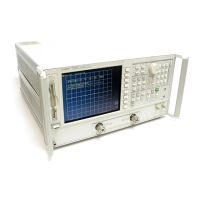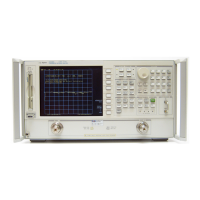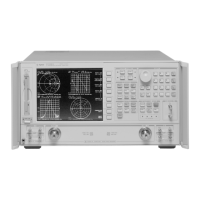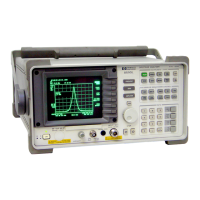5-16
Hardkey/Softkey Reference
Analyzer Functions
displays both the current data and memory traces.
specifies whether or not to store the error-corrected data
on disk with the instrument state.
divides the data by the memory, normalizing the data to
the memory, and displays the result. This is useful for
ratio comparison of two traces, for instance in
measurements of gain or attenuation.
subtracts the memory from the data. The vector
subtraction is performed on the complex data. This is
appropriate for storing a measured vector error, for
example directivity, and later subtracting it from the
device measurement.
stores the current active measurement data in the
memory of the active channel. It then becomes the
memory trace, for use in subsequent math manipulations
or display. If a parameter has just been changed and the *
status notation is displayed at the left of the display, the
data is not stored in memory until a clean sweep has been
executed. The gating and smoothing status of the trace are
stored with the measurement data.
stores only the measurement data of the device under test
to a disk file. The instrument state and calibration are not
stored. This is faster than storing with the instrument
state, and uses less disk space. It is intended for use in
archiving data that will later be used with an external
controller, and data cannot be read back by the analyzer.
presents the sequencing decision making menu under the
menu.
decrements the value of the loop counter by 1.
returns all the display color settings back to the
factory-set default values that are stored in non-volatile
memory.
resets the plotting parameters to their default values.
resets the printing parameters to their default values.
leads to the define save menu. Use this menu to specify
the data to be stored on disk in addition to the instrument
state.
leads to a sequence of three menus. The first defines which
elements are to be plotted and the auto feed state. The
second defines which pen number is to be used with each
of the elements (these are channel dependent.) The third
defines the line types (these are channel dependent), plot
scale, and plot speed.
→
Seq
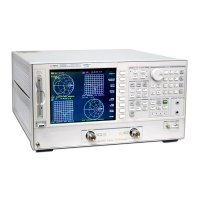
